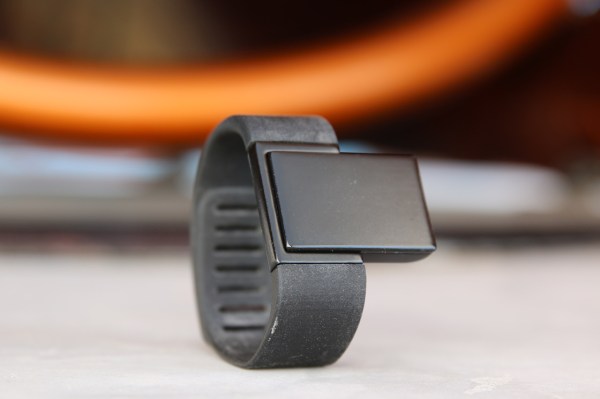If there’s one lesson to be learned at this year’s CES, it’s that everybody and their mothers are going nuts for wearables. More than a few of these peculiar gadgets are meant to make sure you’re getting enough exercise, but a new fitness tracking hardware startup thinks they’ve got an edge on all the wearable incumbents that have popped up these past few years.
You see, rather than just counting your steps for the day, the Atlas — which is being shown off for the first time onstage at our Hardware Battlefield — is capable of determining exactly what exercises you’re doing to give you a better sense of both your fitness level and your form.
Well almost exactly. Creators Peter Li and Mike Kasparian claim that once the Atlas is lashed to your wrists, it continuously keeps track of its movement in space thanks to a built-in accelerometer. While all that is going on, a finely tuned algorithm chews on all of that spatial data to try and figure out what exactly you’re doing at any given moment. After all, the motion signature of bounding up and down while you’re running should look decidedly different from if you’re knocking out push-ups or standing still(ish) for weighted squats. Meanwhile, the Atlas’ backside sports an optical pulse sensor to determine just how hard you’re actually working out, which when combined with all that other data should yield one of the more thoughtful quantified fitness experiences.
Down the road, Li hopes to build Atlas more of an educational tool too: he and his colleagues are targeting the wrist-worn gadget for a Q4 2014 launch and with it will come the ability to derive a Form Score to give users an idea of how good (or terrible) their bench presses are.
[gallery ids="937632,937633,937635,937636"]
The reason for the “almost”? In order to accurately determine what exercises you’re doing, the Atlas has to have a baseline reference for the motion data that those exercises generate. And even then, the chances of you having perfect form while you exercise is questionable so there’s a certain level of acclimation involved here as well before you really start to hit your stride.
“You can wear it as a Fitbit for a week to get your basal metabolic rate down,” Li said. But that’s the fatal flaw that Li sees with some of Atlas’ contemporaries — to hear him tell it, the number of steps a person takes each day usually doesn’t vary dramatically so the value of that information is limited. Atlas on the other hand was designed to monitor the full range of person’s fitness activities in the hopes that the people who really care about exercise
At this stage, the company is working with personal trainers in Austin to flesh out the repertoire of exercises that the Atlas is capable of picking up on. In its pre-release prototype form, it’s capable of recognizing two dozen exercises like bicep curls, squats, pushups — you know, some of the perennial favorites — with support for 50-100 to come as Atlas inches closer to its initial release. Interest piqued? The team has just kicked off an Indiegogo campaign, and you can check them out here.
